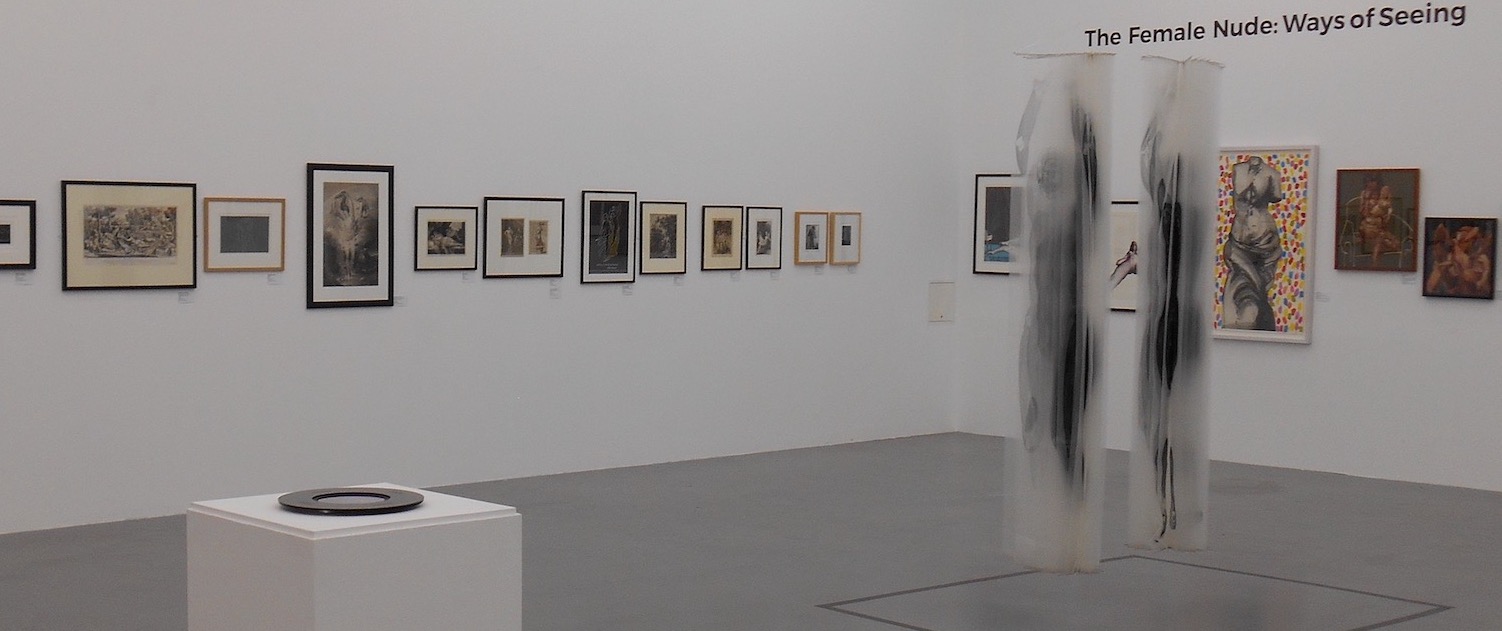Following a visit to Lubaina Himid’s retrospective, second year BA Gillian Brooke-Turner shows how Himid’s Jelly Mould Pavilions for Liverpool (2010) place the audience centre-stage.

Jelly Mould Pavilions for Liverpool (2010) in Lubaina Himid, Tate Modern 2022
Born in Zanzibar and raised in Britain, Lubaina Himid (RA and Turner Prize winner) trained in theatre design before embarking on a career as an artist. Her training has had a strong influence on her art practice evident in the theatricality of her work. Seen in the staging and use of props in Jelly Mould Pavilions for Liverpool (2010), in her Tate Modern retrospective Lubaina Himid (2021).
Jelly Mould Pavilions for Liverpool (2010) is constructed in the manner of a stage set that is curiously reminiscent of a model for a new housing development set within lush parkland. The installation is comprised of found objects – 25 strategically placed Victorian jelly moulds which tower over 26 miniature models of trees – all arranged on a vast ‘table’. The ‘table’ juts from the wall and its shape resembles half a guitar or double bass. The installation’s scale and complex detail demand that viewers actively engage with it. It is necessary to traverse around the installation as it is too large to take in from just one angle and the jelly moulds face in all directions. Himid plays with viewer engagement by setting the height at a level more comfortable for a child’s view than an adult, thereby demanding more intense engagement. Despite looking on, rather than walking amongst it, there is a sense of energy and involvement in traversing back and forth in an effort to digest its contents. The model trees remain as purchased but Himid has embellished the outside of the jelly moulds with painted figures, insects, patterns and shells. All painted in her signature intense, vibrant colours, inferring a child-like quality that promotes an instant connection with her audience and enhances the accessibility of her work. The figures represent portraits of influential black members of the Civil Rights Movement, Martin Luther King, for example, and the patterns mimic the motifs from traditional African fabrics (Guardian Live, 8 February 2022). The shells and insects are not native to British shores and, like the patterns, are intended to conjure a sense of the ‘exotic’. A reference to an historical, and at times still current, Western stereotype of race.
Jelly Mould Pavilions for Liverpool (2010) is a series that was first shown in 2010 in six venues simultaneously in and around Liverpool as part of the Northern Art Prize. It won Himid the “People’s Choice Award” in 2011. The concept for the work arose in response to the lack of public memorials commemorating the contributions of people of colour to Britain. In Liverpool Himid specifically asked her audiences to consider the challenges of both representing and celebrating the contribution of the “African diaspora to the history, culture and rich fabric of Liverpool”. Himid began by imagining a fictitious competition open to architects from all 54 African countries in which participants were tasked with designing a fitting public memorial (liverpoolmuseums.org.uk). The only participant, of course, was Himid. In 2017 she added to the series by creating a full-scale pavilion for the Folkestone Triennial. This work is on permanent display on Folkestone beach in Kent on the location of a former arcade and sweet kiosk. It is a public pavilion where visitors are encouraged to sit and contemplate (creativefolkestone.org.uk/artists/lubaina-himid).
Jelly Mould Pavilions for Liverpool (2010) displayed here at Tate Modern features just one installation but includes many of the original moulds first displayed in the six installations exhibited simultaneously in and around Liverpool. Here at Tate Modern though Himid has omitted the model figures of people and cyclists that featured in the original installations. The concept, however, remains the same – to address racial representation in public national commemoration and in the arts generally, and to promote a sense of the right to belong amongst all British citizens. This imposing installation is positioned in the exhibition’s opening gallery. The only installation in the space it sits in the centre of the gallery displayed amongst paintings and audio.
In this solo retrospective, the first by a female black artist at the Tate, Himid announced that her explicit intention was to “place the viewer centre stage” and encourage her audience to “have a conversation” (Guardian Live, 8 February 2022). Instead of posting explanatory labels beside each work to guide her viewers in how to interpret each piece and direct their thinking, Himid was keen to collaborate with her audience and so she fought “tooth and nail” (ibid.) with Tate’s curators to instead pose questions for her audience to consider. She uses text within this incarnation of Jelly Mould Pavilions to ask viewers to ponder the question: “What are Monuments for?” As discussions with her agent Hollybush Gardens confirmed, this question and the question “Who are Monuments for?” was very much part of her original concept but was not included in the original installation. It is included here as text within the installation for the first time.
An extract from Gillian Brooke-Turner’s perceptive ‘Catalogue Entry’.
Creative Folkestone – https://www.creativefolkestone.org.uk/artists/lubaina-himid/
Guardian Live – Lubaina Himid In Conversation with Hettie Judah, 2 February, 2021
liverpoolmuseums.org.uk – National Museums of Liverpool https://www.liverpoolmuseums.org.uk/whatson/sudley-house/exhibition/jelly-mould-pavilions#section–the-exhibition
